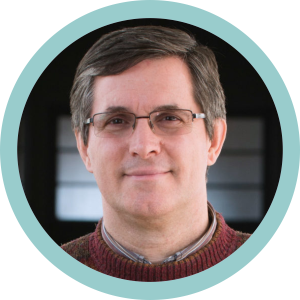Fernando Pereira
Instituto Superior Técnico, Universidade de Lisboa – Instituto de Telecomunicações
Towards visual immersion: Light Fields or Point Clouds?
Tuesday, October 20th, 01:30 PM — 03:00 PM (GMT-3)
Abstract
Multimedia experiences play a growing role in our daily lives as its overwhelming presence vastly impacts many important application areas such as entertainment, sports, education, communication, art and medicine. The recent emergence of powerful imaging sensors is allowing to acquire much richer, faithful, realistic and immersive representations of the visual scenes, notably 3D visual representations, thus offering the users high quality experiences with navigation and immersion functionalities.
The light information associated to these richer visual representations may be modeled by the so-called plenoptic function, which has a limited number of practical acquisition models. In this context, the light field and the point cloud representation paradigms deserve special reference. While the light field representation model is based on a high number and high density of 2D scene perspectives (thus using pixels), the point cloud model represents the visual scene by a set of 3D points (thus using voxels), the so-called geometry, located on the objects’ surfaces, and associated attributes, e.g. color, reflectance and normals. Both representation models have the potential to offer new functionalities, notably the so-called 6 Degrees of Freedom (DoF) immersion, where different and appropriate visual information is offered to the user while exploiting the three rotational degrees of freedom and the three translational degrees of freedom, in the same way as in the real world.
The natural consequence of these very rich, realistic and immersive representations is a very large amount of data, which requires appropriate coding to allow efficient storage and transmission. This evidence of massive amounts of data and the growing pressure from the industry for appropriate coding solutions has led both the JPEG and MPEG standardization groups, the most influential in the imaging and visual data coding arenas, to initiate projects targeting the standardization of coding solutions for both light fields and point clouds.
This talk will concentrate on the recent advances in light field and point cloud coding standardization. In this context, special relevance will be given to the emerging JPEG Pleno and MPEG coding standards as well as some exciting future trends.
Biography
Fernando Pereira is currently with the Department of Electrical and Computers Engineering of Instituto Superior Técnico and with Instituto de Telecomunicações, Lisbon, Portugal.
He is Area Editor of the Signal Processing: Image Communication Journal and Associate Editor of the EURASIP Journal on Image and Video Processing, and is or has been member of the Editorial Board of the Signal Processing Magazine, Associate Editor of IEEE Transactions of Circuits and Systems for Video Technology, IEEE Transactions on Image Processing, IEEE Transactions on Multimedia, and IEEE Signal Processing Magazine. In 2013-2015, he was the Editor-in-Chief of the IEEE Journal of Selected Topics in Signal Processing.
He is or has been a member of the IEEE Signal Processing Society Technical Committees on Image, Video and Multidimensional Signal Processing, and Multimedia Signal Processing, and of the IEEE Circuits and Systems Society Technical Committees on Visual Signal Processing and Communications, and Multimedia Systems and Applications.
He was an IEEE Distinguished Lecturer in 2005 and elected as an IEEE Fellow in 2008 for “contributions to object-based digital video representation technologies and standards”. He has been elected to serve on the Signal Processing Society Board of Governors in the capacity of Member-at-Large for a 2012 and a 2014-2016 term. Since January 2018, he is the SPS Vice-President for Conferences.
Since 2013, he is also a EURASIP Fellow for “contributions to digital video representation technologies and standards”. He has been elected to serve on the European Signal Processing Society Board of Directors for a 2015-2018 term. Since 2015, he is also a IET Fellow.
He has been the MPEG Requirements Chair from 2002 to 2007 and since February 2016 he is the JPEG Requirements Chair.
He is/has been a member of the Scientific and Program Committees of many international conferences and workshops. He has been the General Chair of the Picture Coding Symposium (PCS) in 2007, the Technical Program Co-Chair of the Int. Conference on Image Processing (ICIP) in 2010 and 2016, the Technical Program Chair of the International Workshop on Image Analysis for Multimedia Interactive Services (WIAMIS) in 2008 and 2012, and the General Chair of the International Conference on Quality of Multimedia Experience (QoMEX) in 2016.
He has been participating in the MPEG standardization activities, notably as the head of the Portuguese delegation, chairman of the MPEG Requirements Group, and chairman of many Ad Hoc Groups related to the MPEG-4 and MPEG-7 standards. He is a co-editor of ‘The MPEG-4 Book’ and ‘The MPEG-21 Book’ which are reference books in their areas.
He won the first Portuguese IBM Scientific Award in 1990, an “ISO award for Outstanding Technical Contribution” for his contributions to the MPEG-4 Visual Standard in 1998 and an Honorable Mention of the UTL/Santander Totta Award for Electrical Engineering in 2009, 2010, 2011 and 2012. He won the ‘Excellent Professor’ award from the Electrical and Computers Engineering Department of Instituto Superior Técnico in 2010, 2011 and 2012.
He has contributed more than 250 papers in international journals, conferences and workshops, and made several tens of invited talks at conferences and workshops. His areas of interest are video analysis, coding, description and adaptation, and advanced multimedia services.
